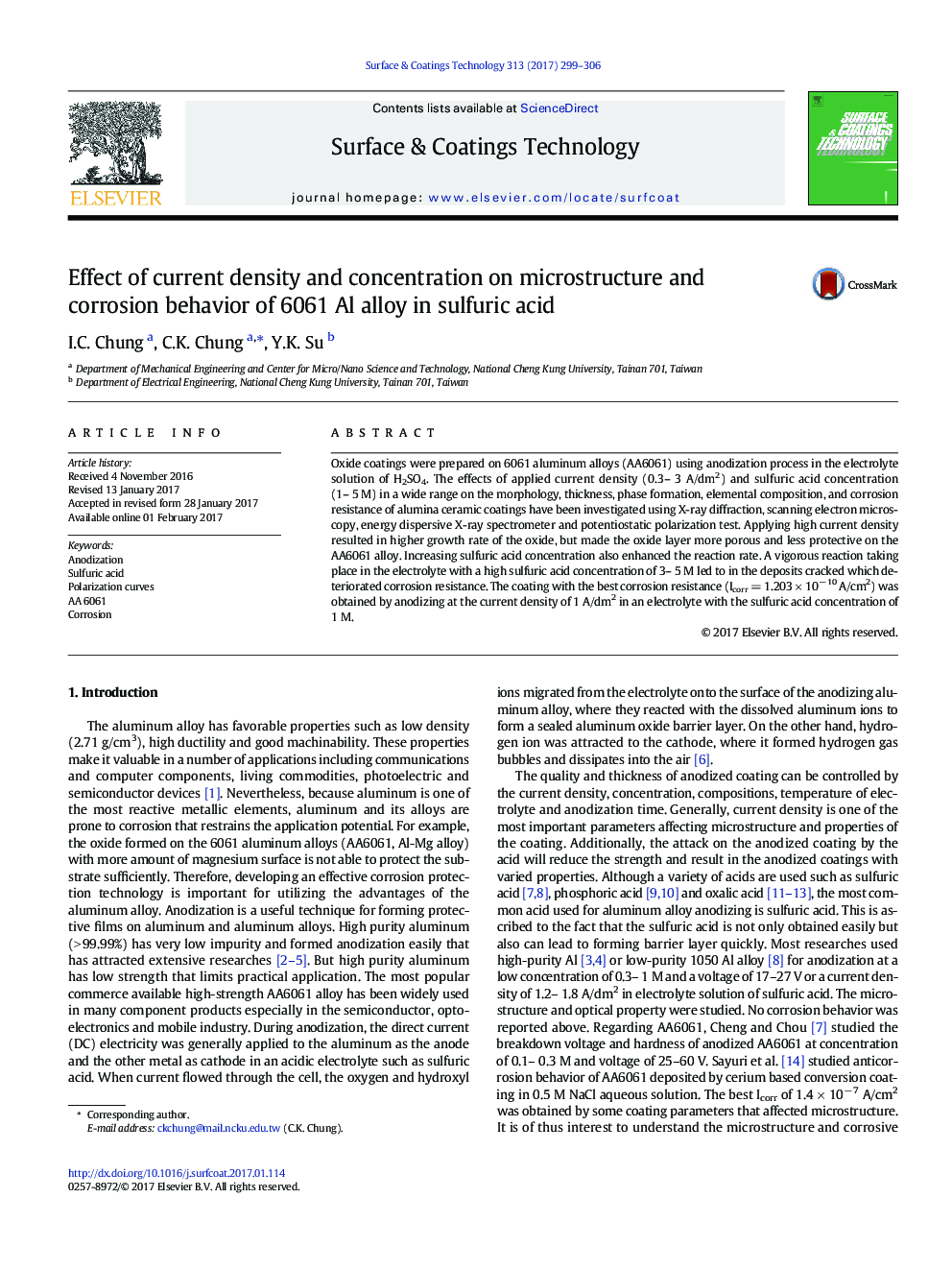| Article ID | Journal | Published Year | Pages | File Type |
|---|---|---|---|---|
| 5465548 | Surface and Coatings Technology | 2017 | 8 Pages |
Abstract
Oxide coatings were prepared on 6061 aluminum alloys (AA6061) using anodization process in the electrolyte solution of H2SO4. The effects of applied current density (0.3- 3 A/dm2) and sulfuric acid concentration (1- 5 M) in a wide range on the morphology, thickness, phase formation, elemental composition, and corrosion resistance of alumina ceramic coatings have been investigated using X-ray diffraction, scanning electron microscopy, energy dispersive X-ray spectrometer and potentiostatic polarization test. Applying high current density resulted in higher growth rate of the oxide, but made the oxide layer more porous and less protective on the AA6061 alloy. Increasing sulfuric acid concentration also enhanced the reaction rate. A vigorous reaction taking place in the electrolyte with a high sulfuric acid concentration of 3- 5 M led to in the deposits cracked which deteriorated corrosion resistance. The coating with the best corrosion resistance (Icorr = 1.203 Ã 10â 10 A/cm2) was obtained by anodizing at the current density of 1 A/dm2 in an electrolyte with the sulfuric acid concentration of 1 M.
Related Topics
Physical Sciences and Engineering
Materials Science
Nanotechnology
Authors
I.C. Chung, C.K. Chung, Y.K. Su,
